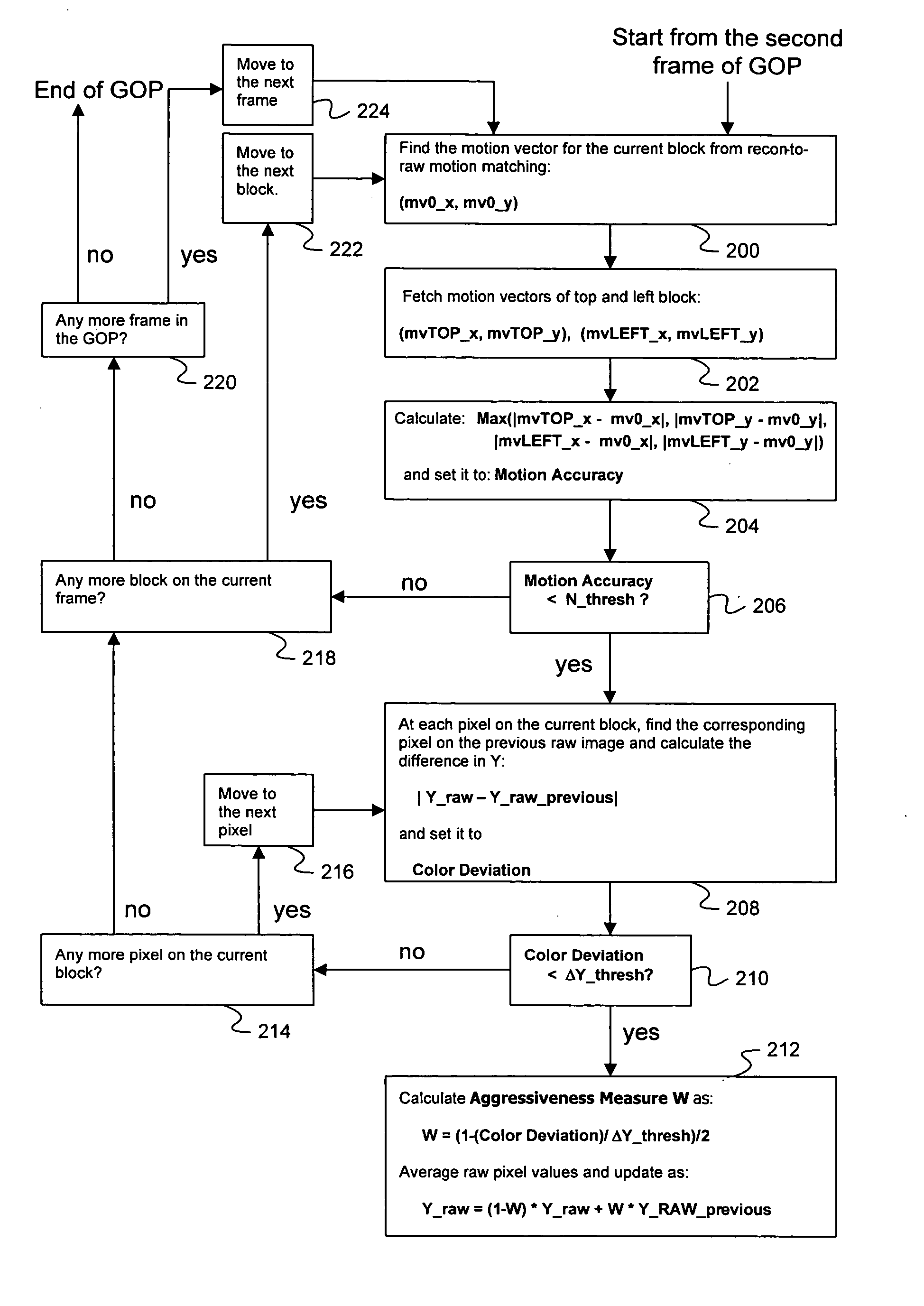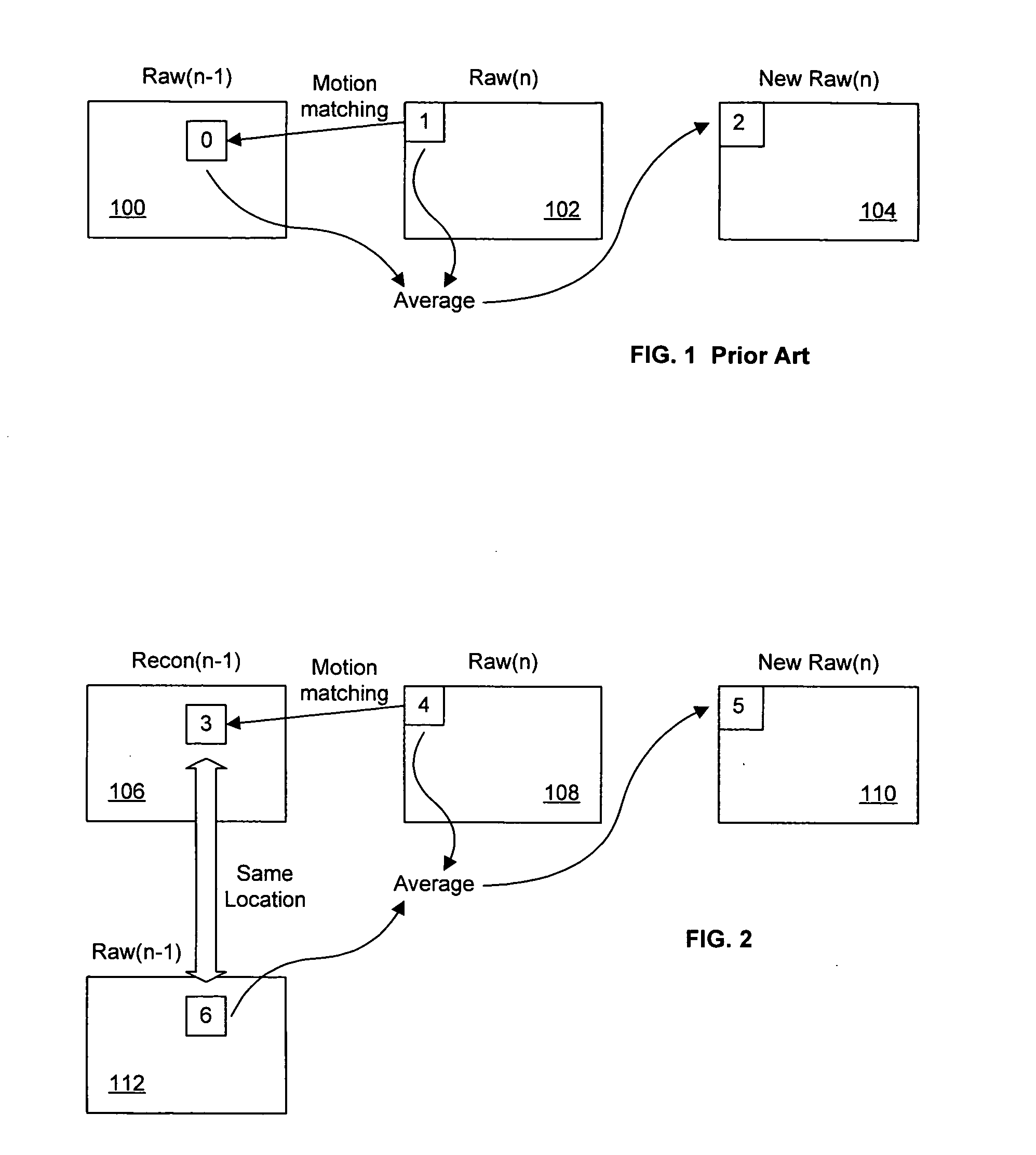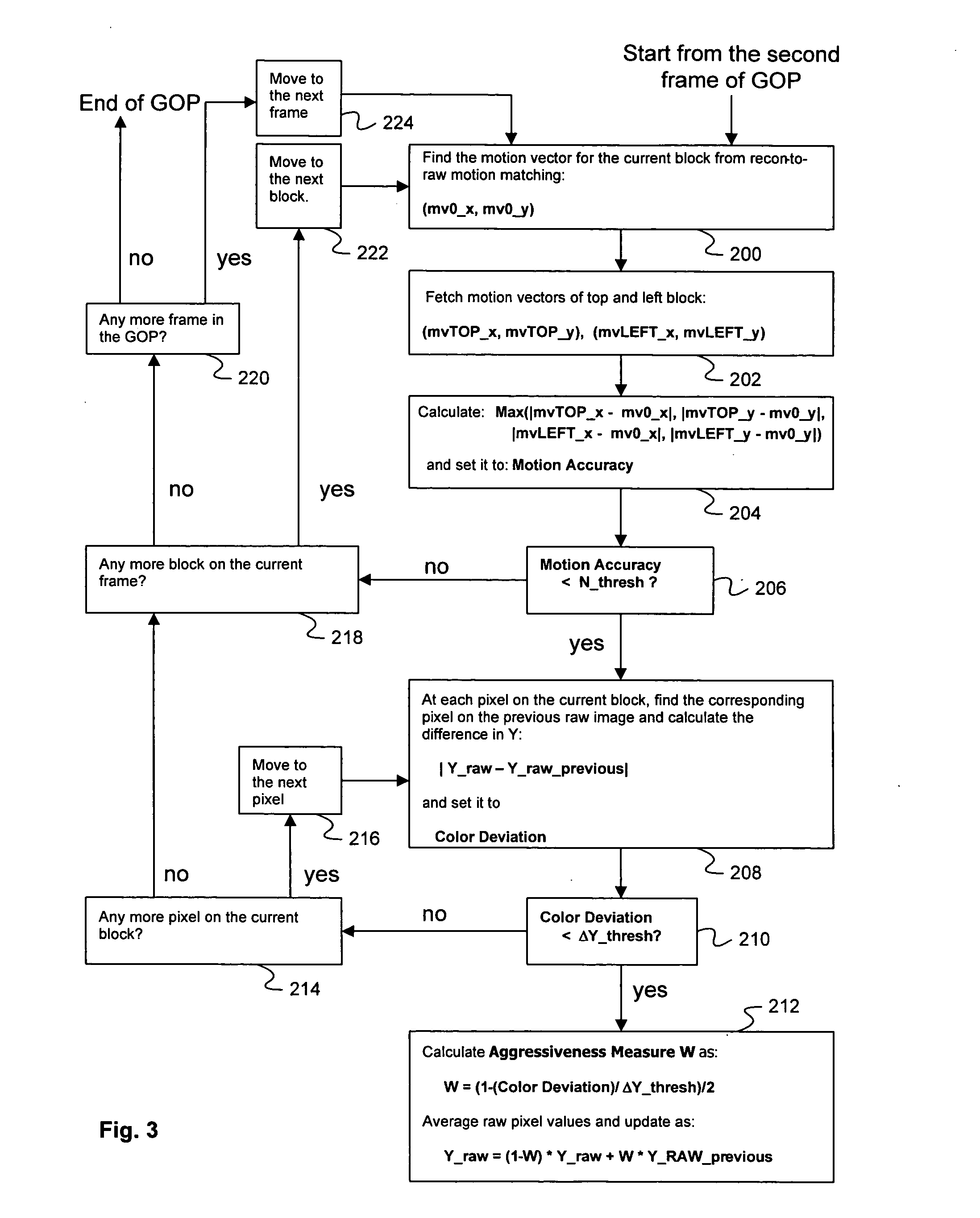Image flow knowledge assisted latency-free in-loop temporal filter
a technology of image flow knowledge and temporal filter, applied in the field of digital video compression algorithms, can solve the problems of reducing the efficiency of coding, affecting the quality of coding, so as to achieve efficient and scalable effect, reducing temporal noise, and reducing cos
- Summary
- Abstract
- Description
- Claims
- Application Information
AI Technical Summary
Benefits of technology
Problems solved by technology
Method used
Image
Examples
Embodiment Construction
[0016] The presently preferred methods of the present invention provide methods that use motion vectors calculated from recon-to-raw motion matching for temporal smoothing. This approach provides scalability built into its algorithm structure.
[0017] At very high bit rates, since recon images are closer to raw images, the preferred methods tend to behave like approaches based on raw-to-raw motion matching. Coding performance is generally very close between these two approaches.
[0018] At lower bit rates, the preferred methods are yet sufficient enough so that the main features on the raw image are still reasonably well reconstructed (hereafter “Ambient Bit Rates”), and the differences between recon and raw images become larger. At Ambient Bit Rates, most of the real features present on the raw frame whose signals are strong enough to be visible are still well reconstructed.
[0019] Since high frequency components are generally first to be thrown away, the difference between raw and r...
PUM
 Login to View More
Login to View More Abstract
Description
Claims
Application Information
 Login to View More
Login to View More - R&D
- Intellectual Property
- Life Sciences
- Materials
- Tech Scout
- Unparalleled Data Quality
- Higher Quality Content
- 60% Fewer Hallucinations
Browse by: Latest US Patents, China's latest patents, Technical Efficacy Thesaurus, Application Domain, Technology Topic, Popular Technical Reports.
© 2025 PatSnap. All rights reserved.Legal|Privacy policy|Modern Slavery Act Transparency Statement|Sitemap|About US| Contact US: help@patsnap.com



